

Matt Robinson
2026 Skoda Fabia 130 review: Quick drive
16 Hours Ago
The best-known badge in hot hatches is back for 2021. The new Golf GTI is more grown up and far more capable, but also more expensive, than before.
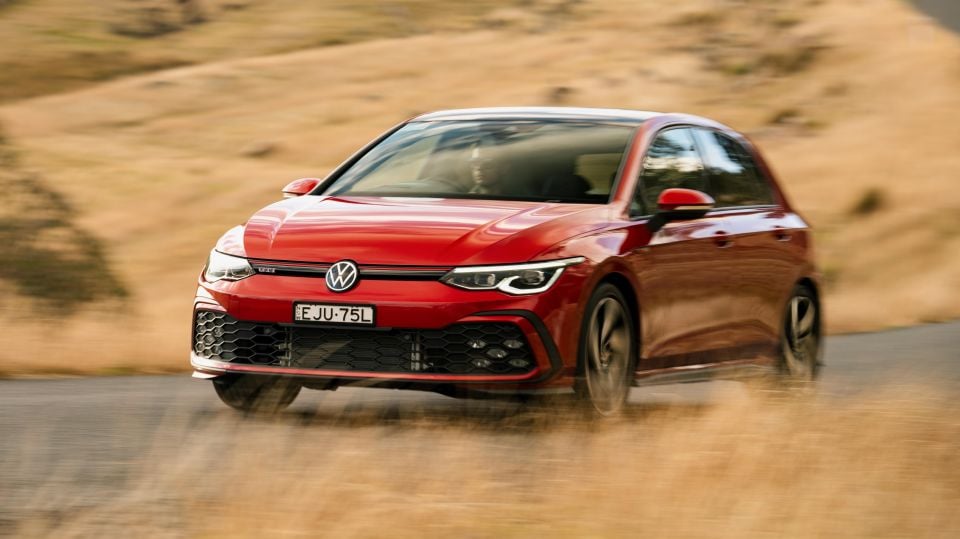
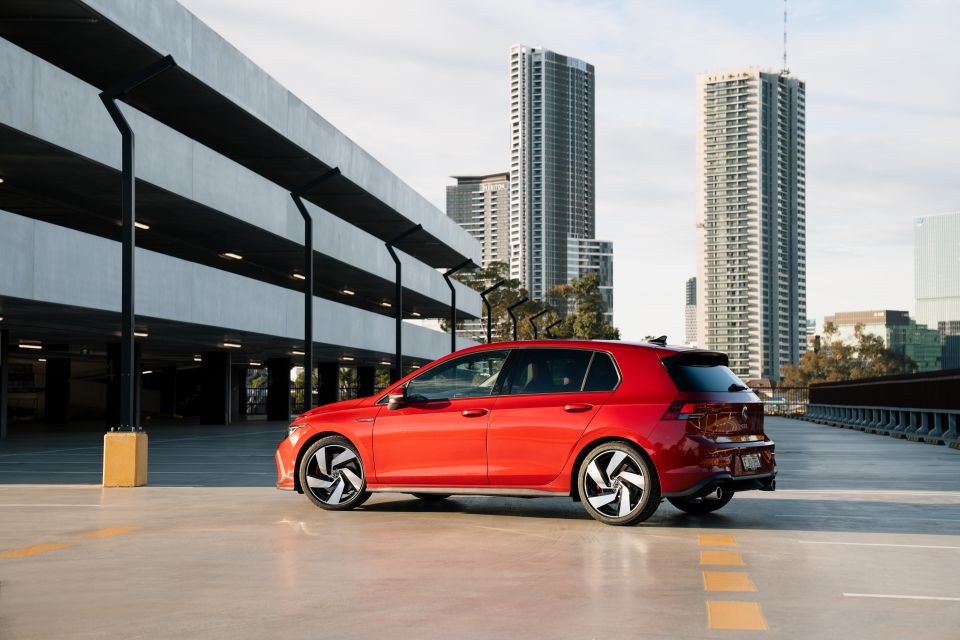

Senior Road Tester
New from
$29,350
excl. on-roads

Senior Road Tester
New from
$29,350
excl. on-roads


Senior Road Tester
New from
$29,350
excl. on-roads

Senior Road Tester
New from
$29,350
excl. on-roads
Quickly see how this car stacks up against its competition. Select any benchmark to see more details.
Where expert car reviews meet expert car buying – CarExpert gives you trusted advice, personalised service and real savings on your next new car.
It might only be an evolutionary step-up from its hugely successful predecessor, but the new 2021 Volkswagen Golf GTI Mk8 feels like huge leap forward in the dynamics department, not to mention its future-proof cockpit and technology.
The GTI name means plenty to someone of my vintage, having lived and worked (if you can call playing tennis a job) in Basel, Switzerland, and been lucky enough to ride shotgun in a black 1980 Golf GTI. It was an aspirational car if ever there was one for an Aussie teenager who’d only ever driven a Ford Cortina as a daily.
The same can be said of my equally invigorating introduction to the Mk5 GTI decades later, on a hard-charging drive across the Victorian High Country with legendary racer Hans Joachim-Stuck breathing down my neck for more than 40km.
I worked the six-speed DSG to within an inch of its mechanical life in order to avoid the shame of slowing him down.

Naysayers have sat there over the years and bellyached about successive models. In their eyes they failed to push the hot hatch game far enough forward, but I’d argue Volkswagen understands the evolutionary formula perfectly, playing a similar game to its similarly all-conquering Porsche 911 cousin.
The same can be said of the new Mk8 Golf GTI. It’s got an evolution of the same engine as the superseded Mk7.5 GTI, and it’s one-tenth slower to 100km/h, but everything else feels significantly more resolved and in-sync than ever.
There’s a touch of class about the eighth-generation Golf GTI, with its all-digital cockpit and under-the-skin changes making this not only the safest GTI yet but, in my view, the best iteration for drivers.
It needs to be, if it’s going to hold on to its benchmark status against the likes of the incoming Hyundai i30 N DCT.
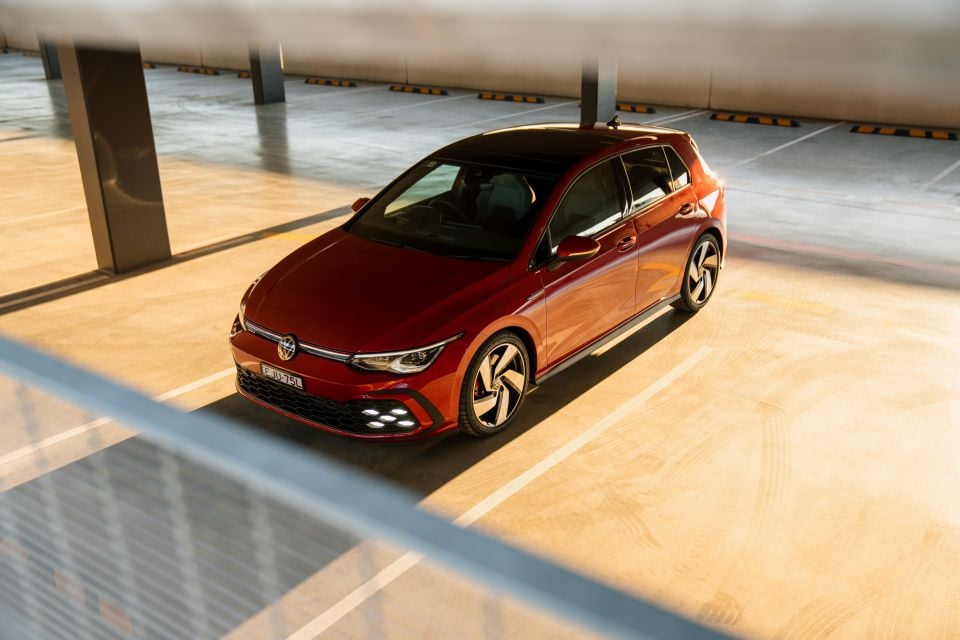
Punters will likely have to look twice at the latest GTI to recognise it, but fans and enthusiasts will notice the slimmer grille, narrower LED headlights with a light strip linking the two sides, and a larger single-piece air intake.
A key feature, albeit hidden to the untrained eye, is the hexagon intake mesh concealing 10 LED fog lights. You’ll want to show your mates, because it looks very cool.
Let’s not forget the fact the GTI naturally looks the part even at standstill, dropped 15mm lower over the standard versions.
The changes are more subtle at the rear, but the tail light assembly takes a more sophisticated approach, and the GTI logo seems to mirror that of the original version more than before.
Colours will play an important role when choosing your new Golf GTI. Our tester was painted in Kings Red Premium Metallic, which does look the business, but the no-cost Pure White also pops with the red GTI accents… though you might want to look at alternative wheel options.
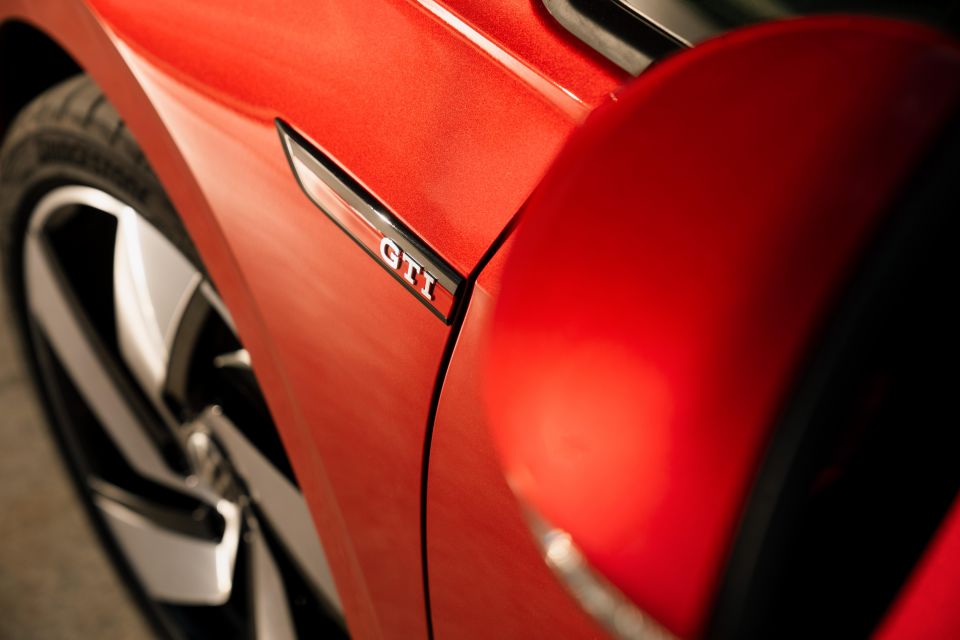
The Volkswagen Golf GTI has a starting price above $50,000 for the first time in its history.
It’s priced from $53,100 before on-road costs in Australia, but you can pay up to $58,400 before on-road costs if you opt for the Luxury Package ($3800) and the Sound and Vision Package ($1500), as fitted to our tester.
The former gets you Vienna leather seat trim, heated and ventilated front seats, a powered driver’s seat with memory, a heated steering wheel, and a panoramic glass sunroof. The Sound and Vision package brings a head-up display and a 480W Harman/Kardon premium sound system.
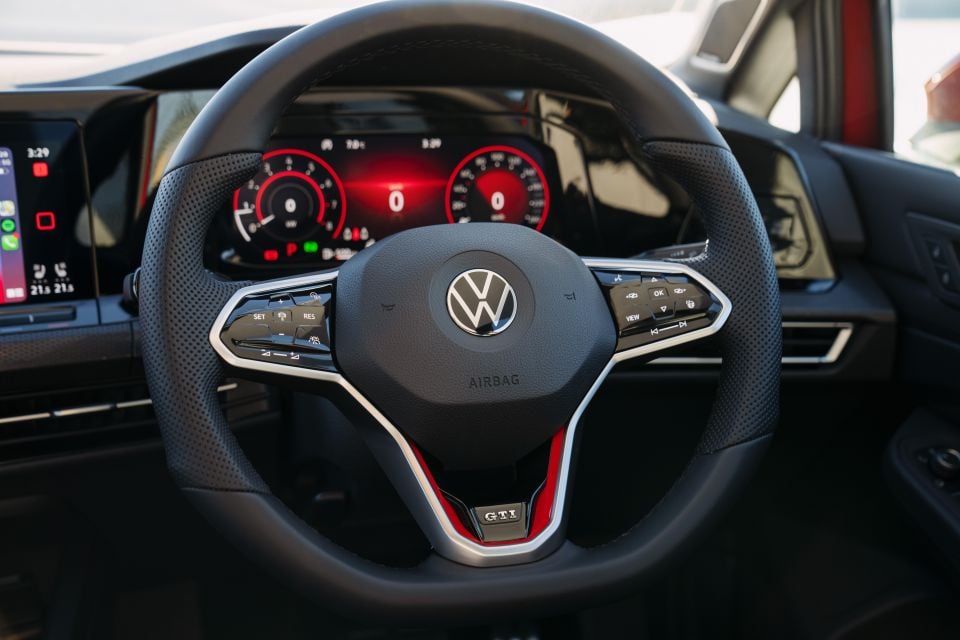
Although it’s not the only hot hatchback to tip into the $50,000 bracket, the Golf GTI’s steeper new sticker price puts it up against a strong set of competitors.
The range-topping Hyundai i30 N DCT with a sunroof undercuts it at $52,000 before on-roads, and the hardcore Renault Megane RS costs $56,990 before on-roads with an automatic.
BMW has the 128ti from $56,900 before on-roads if you want something German like the Golf.
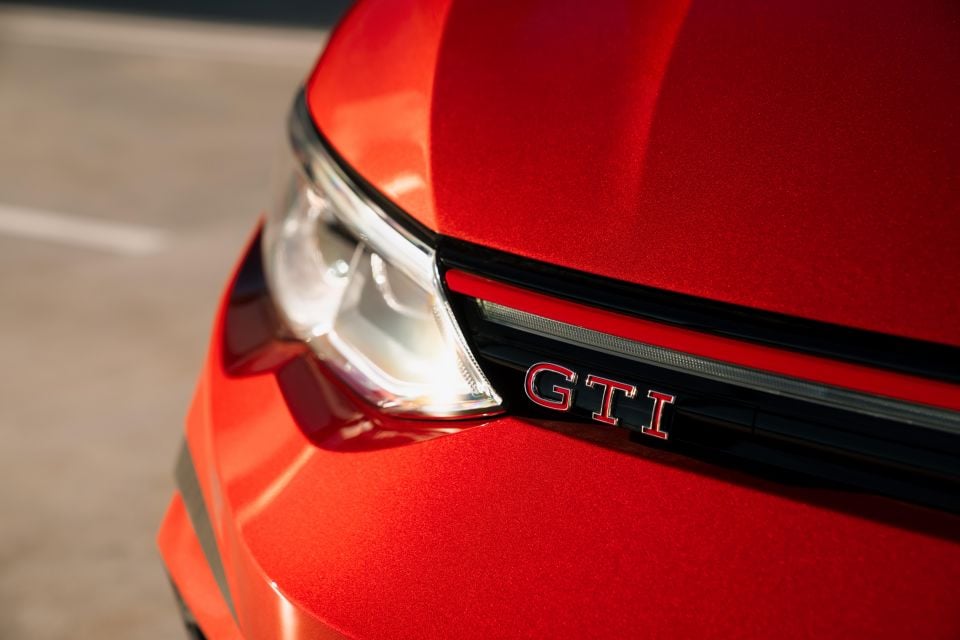
Buy your new car without the stress. It's fast, simple and completely free.

Great service from Travis and team, second time I have used this business would not hesitate to recommend them to anyone
Craig C.
Purchased a Ford Ranger in Sunshine Coast, QLD
CarExpert helped Craig save thousands on his Ford Ranger, now let us save you on your next new car.
Find a dealAcross the range, the new Volkswagen Golf packs the latest IQ.Drive highway driving assistant, LED headlights, and a 10.25-inch digital instrument binnacle.
The IQ.Drive suite includes adaptive cruise with stop/go, blind-spot monitoring with rear cross-traffic alert, driver attention monitoring, lane-keeping assist, turn assist, parking sensors and a reversing camera, exit warning, and AEB with pedestrian and cyclist detection,
As the current range-topper, the GTI features a configurable version of the cockpit from lower-end models, and a 10-inch infotainment touchscreen with factory satellite navigation, and wireless Apple CarPlay/Android Auto.
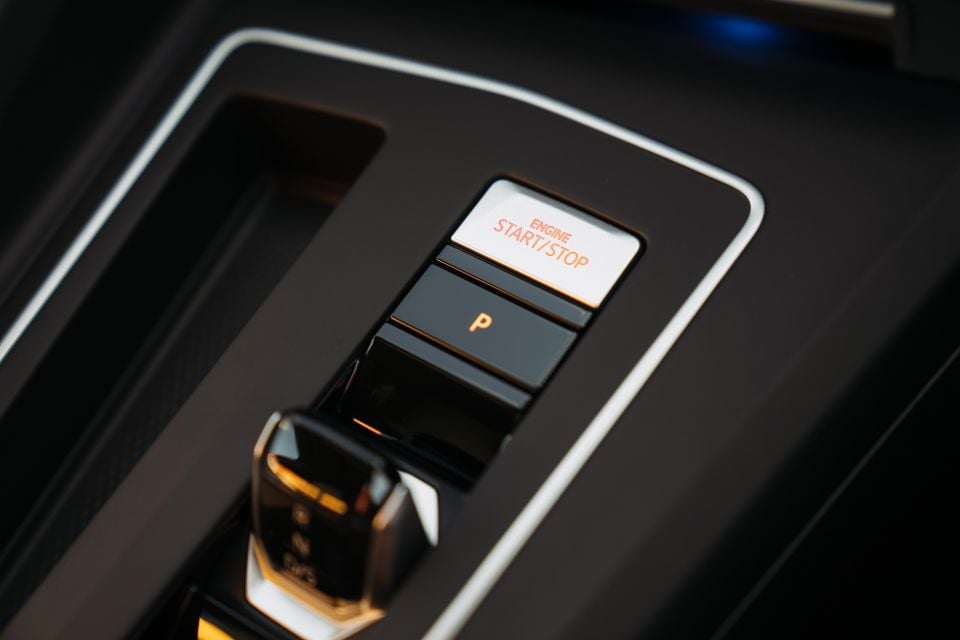
There’s keyless entry and start, tri-zone climate control, wireless phone charging, four USB-C charge ports, and a six-speaker sound system.
The driver and passenger sit in tartan-trimmed sports seats, and gains Adaptive Chassis Control, 18-inch alloy wheels, twin exhaust pipes, and a full range of GTI body and trim add-ons.
Six colours are offered: Pure White, Moonstone Grey, Kings Red, Atlantic Blue, Dolphin Grey, and Deep Black.
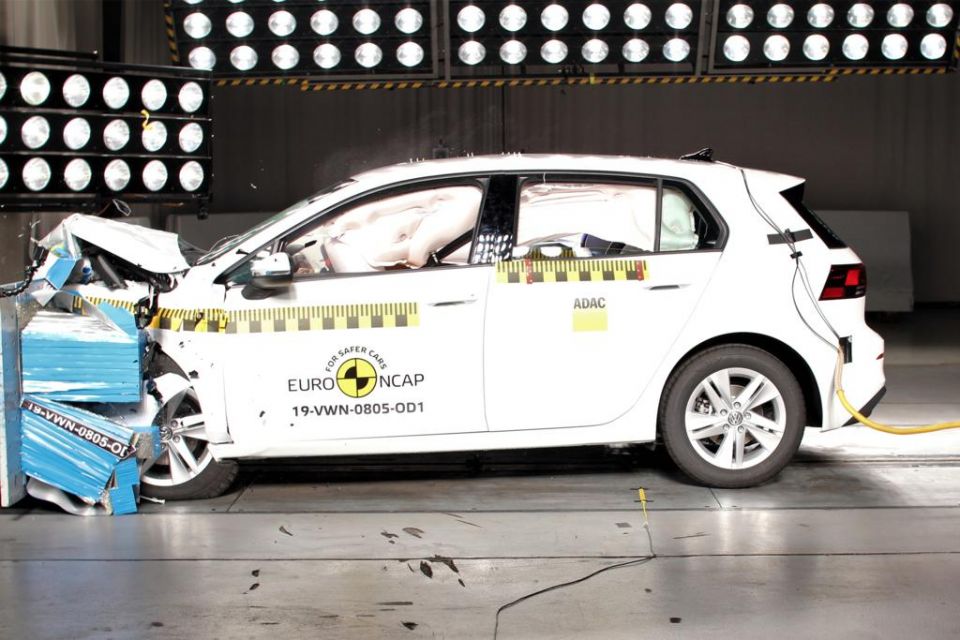
The 2021 Volkswagen Golf has a five-star ANCAP rating based on testing carried out by Euro NCAP in 2019.
It scored 95 per cent for adult occupant protection, 89 per cent for child occupant protection, 76 per cent for vulnerable road user protection, and 80 per cent for safety assist.
Standard safety equipment atop eight airbags in Australia includes:

Just a cursory glance through the window is enough to realise the new Golf has taken a massive leap forward in the tech space.
Previously it looked and felt busy, with an array of buttons, dials and an oversize shifter. This time around Volkswagen has taken a minimalist approach, deploying dual screens and eliminating 99 per cent of the dials and traditional buttons in favour of touchscreens and sliders which take some time to get used to, before feeling automatic.
After initially hating the tiny fly-by-wire shifter in the new Porsche 911, I’m now a fan of it (and the similar one in the new GTI) for its general intuitiveness and speed to engage.
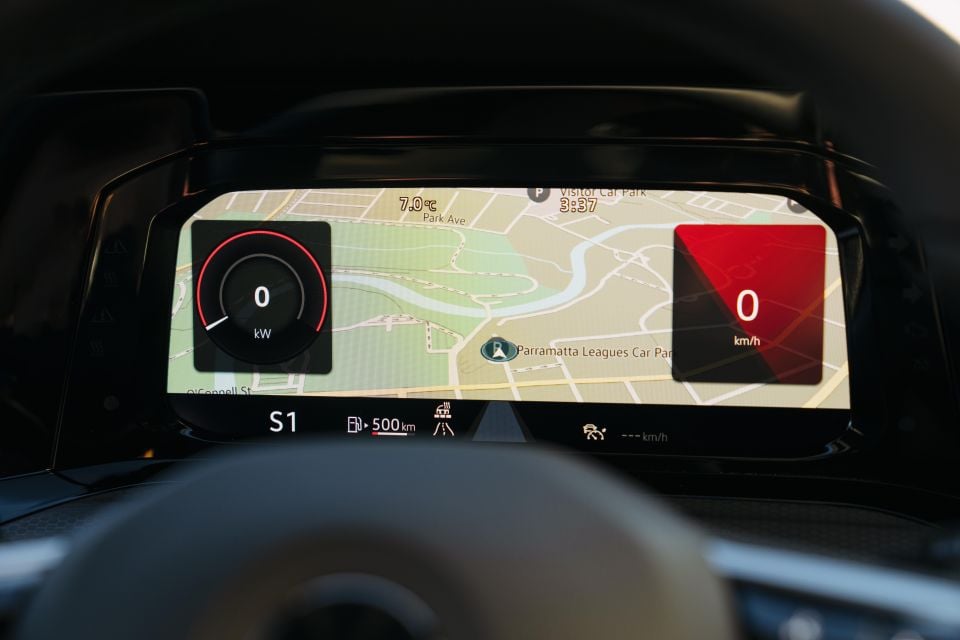

The new Golf combines Volkswagen’s 10.25-inch Digital Cockpit Pro with its 10-inch touchscreen infotainment display. There’s more colour and better clarity now, and more viewing options – once you get the gist of all the various menus behind the interface.
It’s fast, with none of the glitches that sometimes surfaced in previous Volkswagens – particularly with CarPlay, which occasionally rebooted itself mid-conversation or when you were about to receive a navigation instruction. There’s none of that in the new GTI.
Once you get the gist of the new screens, you’ll likely find yourself switching to any one of 30 colours in the ambient light palette, along with countless other configurable functions at the driver’s fingertips.
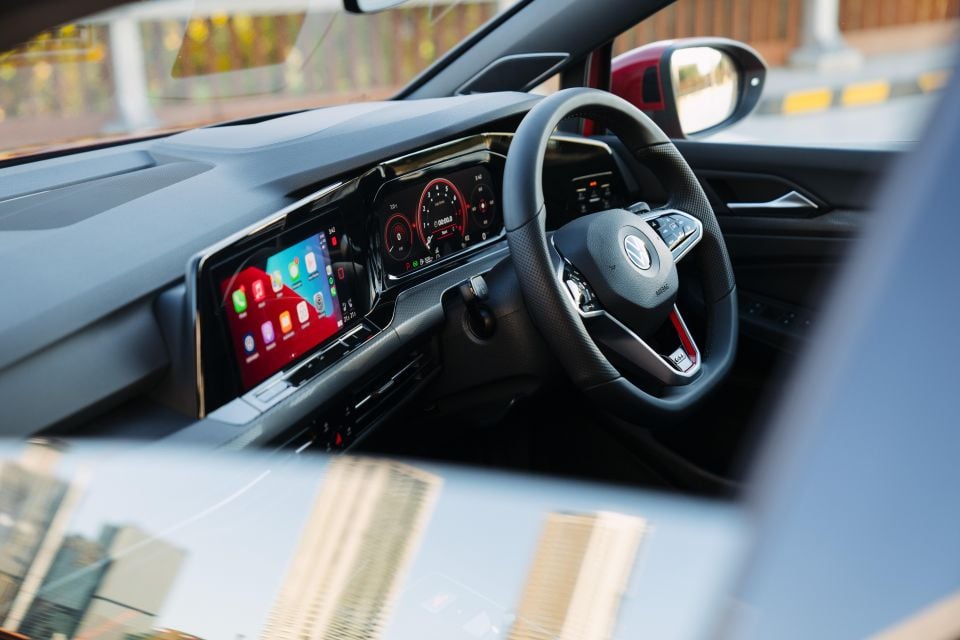
While the standard three-zone climate control is nice, it remains tiresome to fiddle with the controls once you’ve located the relevant menu. I’d prefer dials in this case. Same goes for a manual-only transmission button beyond pulling the paddle shifters.
While all the major touch points are soft, there’s still an annoying number of hard (scratchy) surfaces that seem to afflict the Volkswagen range.
Otherwise it’s generally a very pleasant place to be, with some of the most comfortable and supportive sports seats in the business – this time with integrated headrests, upholstered in the optional Vienna leather with contrast red stitching as part of an extensive ‘Luxury’ package.


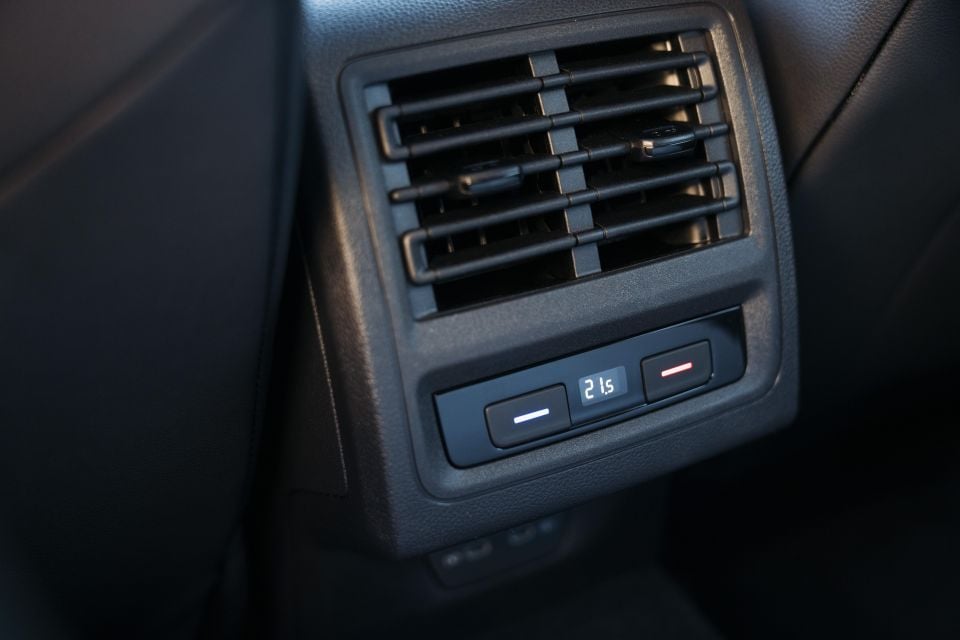
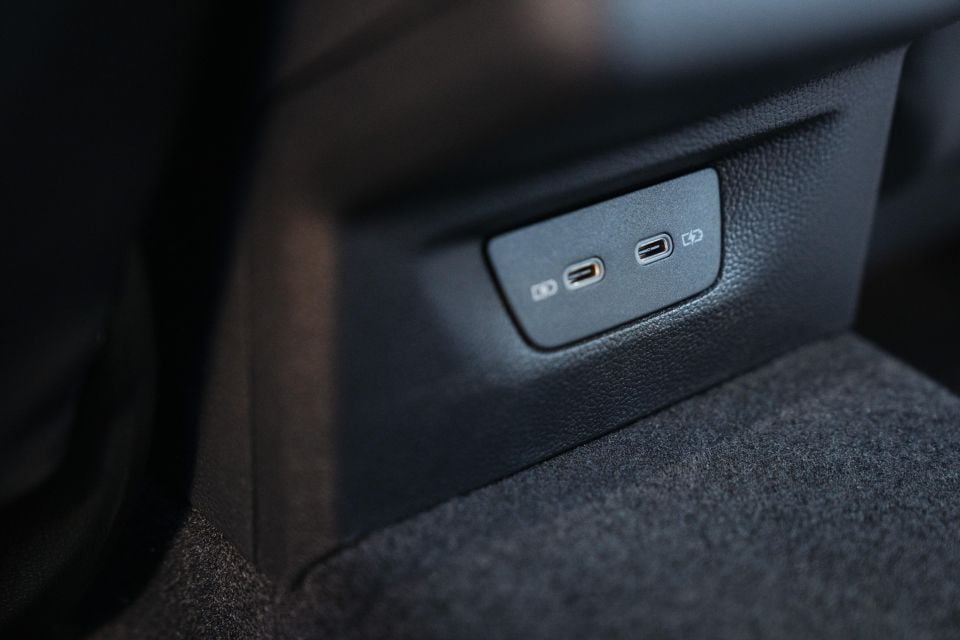
Even though the Mk 8 GTI gets a slightly longer wheelbase and body, it’s also a bit narrower than the last car, so rear passenger space is around the same.
Luggage space in the GTI (374 litres) is marginally less than in the regular Golf (381 litres), not that there’s much in it.
With the benefits of a relatively flat 60/40 split-fold function, I did runs to both the Sydney fruit markets and Costco with my neighbour, each time with a full load, but with space to spare thanks to the total seats-down space of 1230 litres opening up.
Despite the tiny centre console bin, there’s plenty of room for odds and ends up front and in the sizeable door pockets all round. There’s ample USB-C ports (two up front, two down back), rear seat cupholders, and air vents with temperature controls.
There’s better LED lighting inside too, with dual touch lights for the driver, front passenger, and both rear-seat passengers. Additionally, the door-handle mounted puddle lights are some of the brightest LEDs we’ve yet to see.
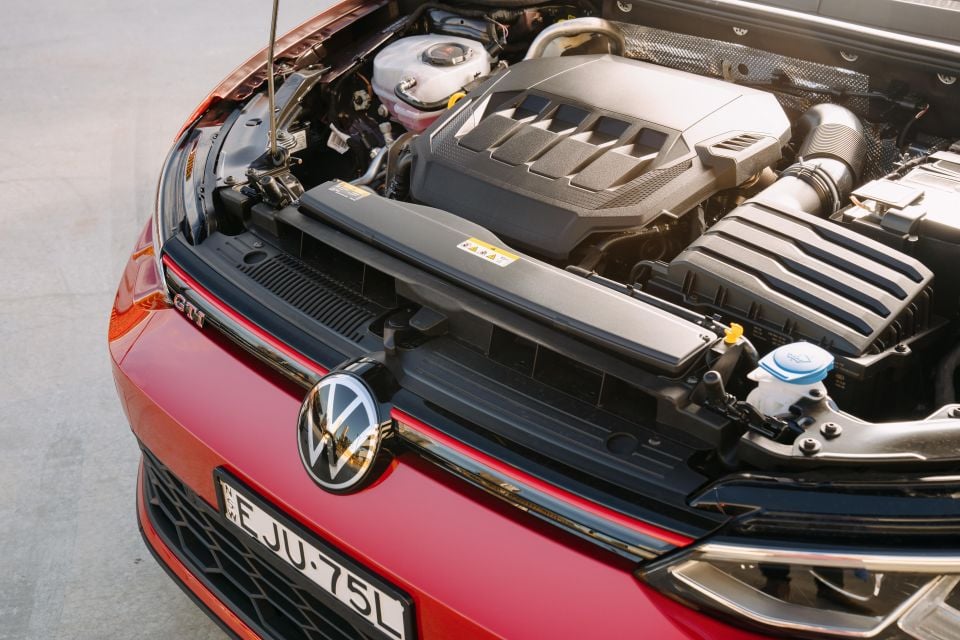
The Golf GTI is powered by a development of the EA888 engine used in its predecessor, good for a 6.4-second sprint to 100km/h.
The 2.0-litre four-cylinder turbo makes 180kW of power and 370Nm of torque, sent to the front wheels through a seven-speed wet dual-clutch transmission.
As was the case late in the Mk7.5 model’s life, there’s no manual option in Australia.
An electronic locking front differential is standard to help put the power down.
Claimed fuel economy is 7.0L/100km on the combined cycle, and you’ll need to stump for 95RON premium unleaded fuel.

Where expert car reviews meet expert car buying – CarExpert gives you trusted advice, personalised service and real savings on your next new car.
I’ve always welcomed the first drive in a new Golf GTI, but I’ve also never been completely satisfied with the overall experience, especially on a track. They’ve been too soft with not quite enough poke, and all a bit underwhelming.
In other words, I couldn’t wait for the Golf R to arrive.
That’s not quite fair either, though, because the GTI always comes back to everyday drivability and comfort, given the largely low-speed commutes we all have to live with these days.
It’s precisely these conditions in which the GTI has always reigned supreme for its sheer flexibility and ‘jack-of-all-trades’ approach.
This is also where the eighth-generation Golf GTI is different. Not only does it provide the same levels of ride comfort and general practicality, for the first time you can also really lean on it on the track.
Yep, this is the best Golf GTI I’ve ever driven.
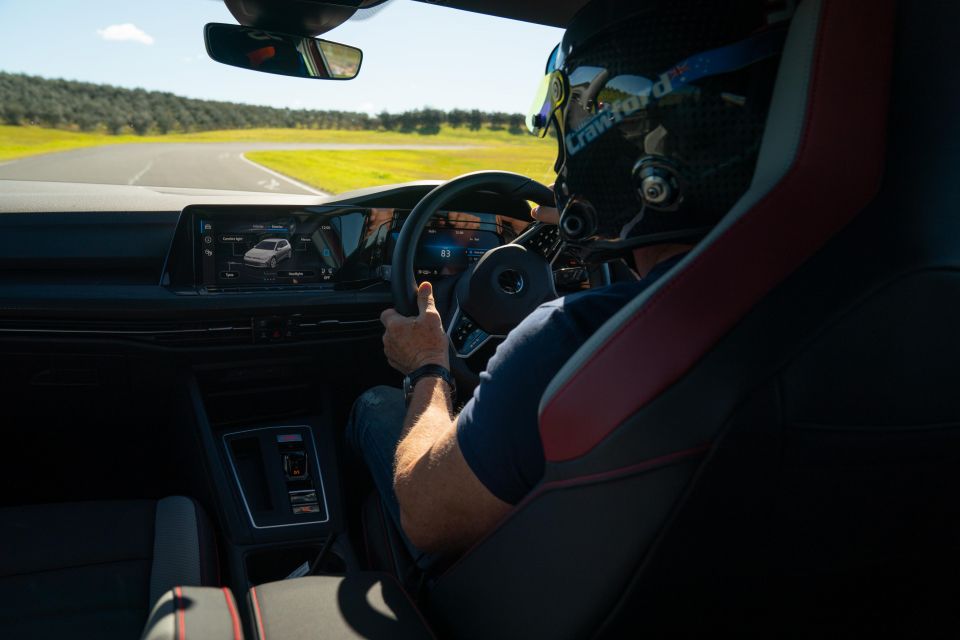
Here’s why. The front subframe is now made from aluminium as opposed to steel on the previous generation GTI, so it’s lighter and stronger for noticeably superior front-end stiffness.
I’d heard whispers from overseas colleagues, but really wasn’t buying it until that first lap on track. It turns in with far more assertiveness and accuracy, time and time again, and it’s no biggie if you overshoot the braking mark.
You see, the new GTI takes another significant step in the chassis department for the first time in the form of Vehicle Dynamics Manager; an electronic brain that synchronises the settings for the adaptive dampers, stability control, front-axle locking differential, steering weight, and drivetrain response.
Even though the damper settings change in Eco, Comfort and Sport, there are infinite increments available if you choose a set-up in the Individual mode.
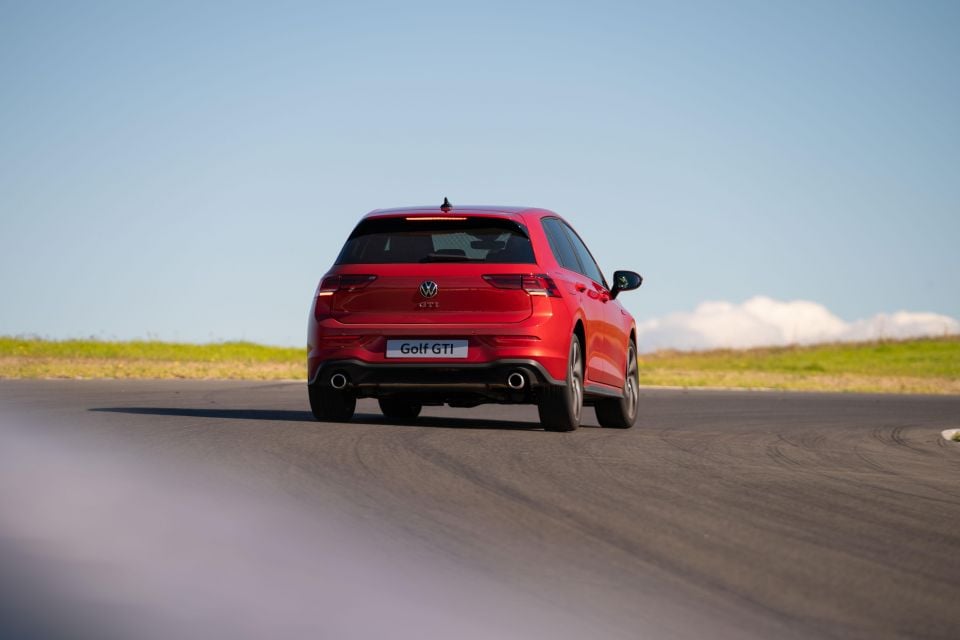
It works a treat, not that I found much of a need to go beyond Sport on track, where the GTI was so much more composed through the corners, despite carrying more speed. Brilliant stuff, it really is.
Our test car was shod with 18-inch Bridgestone Potenza tyres (225/40) all round – not an overly large footprint – but grip levels even under extreme loads was impressive. You can push, and then keep on pushing, without any dramas.
Body control is equally inspiring thanks in part to spring rates, which have been adjusted up – by 15 per cent at the rear, and five per cent up front. Hitting apexes perfectly, time-and-time again, isn’t an issue in the latest GTI.
Lap after lap this car will hit its mark with utmost confidence.
The brakes are more than up to the task (340mm front, 310mm at the rear) with non-stop laps of the tight test circuit revealing confident stopping power and a progressive pedal.
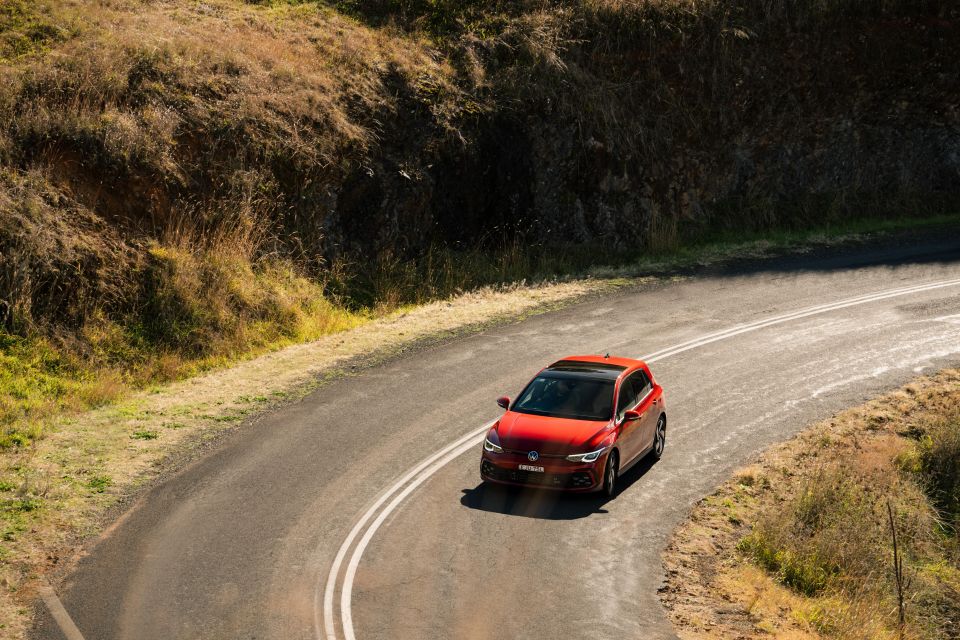
All-in-all, it’s hugely satisfying and a tremendous engineering effort, given the sheer breadth of chassis compliance needed for the road conditions where the GTI will live almost exclusively.
Funnily enough, I don’t recall any torque steer. It too seems to have been utterly eradicated by the VDM system.
Same goes for understeer. I deliberately went in too hot into a number of corners (on track), with the VDM seemingly correcting the effect before it became a problem.
There’s a little bit of axle tramp in the wet when accelerating hard out of an uphill corner, but even that was mild and quickly dispensed with.

It’s more fun driving the GTI in Sport using the manual shift paddles than leaving the seven-speed DSG to its own devices, but this seems quicker-shifting than on the previous version, or just more in sync with the drivetrain.
It’s more refined too, with better insulation. Although you still get some pops and crackles in Sport, a few more decibels wouldn’t go astray.
There are bound to be those who’ll criticise the carryover engine outputs from the previous version, the fact is the GTI puts the power down with plenty of resolve and has a willingness to explore the upper ends of the rev range.
It’s not explosive out of the blocks, but there’s plenty of fun to be had in the mid-range. Better still, it pulls solidly out of the corners with near-perfect composure. Surely this is what it’s all about, rather than a situation where the power overwhelms the chassis.
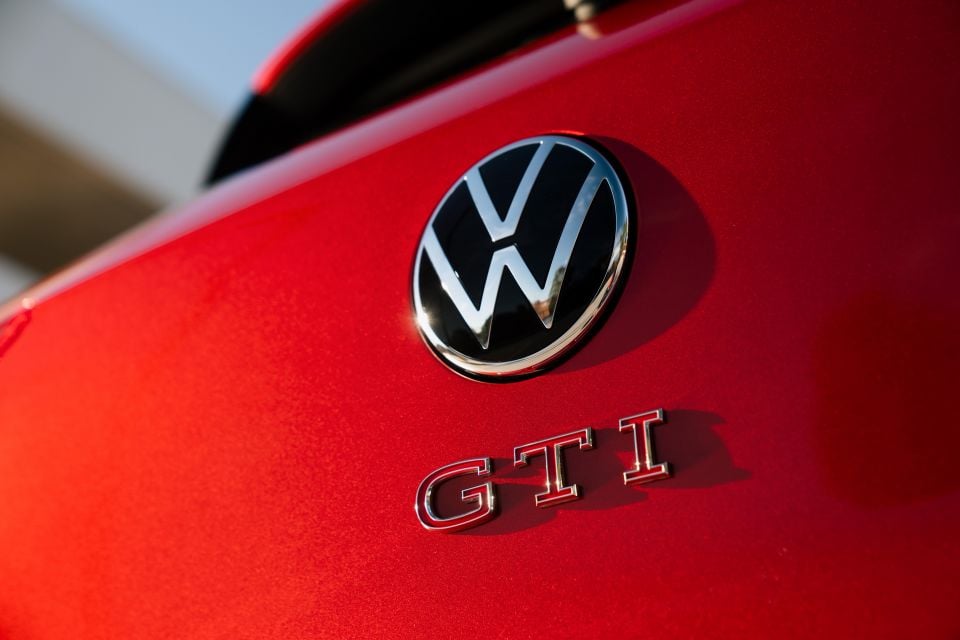
The 2021 Volkswagen Golf is backed by a five-year, unlimited-kilometre warranty.
Maintenance is required every 12 months or 15,000km – whichever comes first.
A three-year service plan costs $1450, and a five-year plan will set you back $2300.
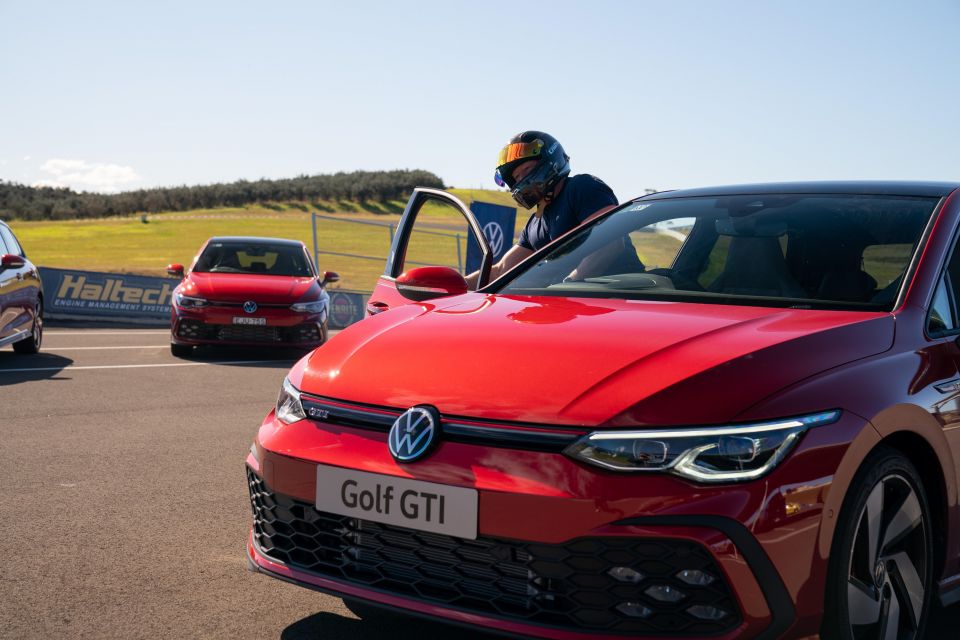
Let’s put it this way. I took a mate of mine for a ride in the GTI on the weekend, and he called me an hour later to say he’s having second thoughts on the Mini Countryman Cooper S Boardwalk edition he and his wife had their hearts set on.
It might not look a whole lot different from the model it replaces, but mark my words the Mk8 Golf GTI elevates this storied badge to a level of dynamic performance not previously experienced over its 46-year lifetime.
It’s still not the fastest hatch around (far from it), but it’s guaranteed to hold its mantle as the best all-round daily hatch on the market, notwithstanding its significant price hike.
As the saying goes, you get what you pay for.

Click the images for the full gallery
Where expert car reviews meet expert car buying – CarExpert gives you trusted advice, personalised service and real savings on your next new car.
Anthony Crawford is a CarExpert co-founder and senior presenter with 20+years in automotive journalism and content creation.


Matt Robinson
16 Hours Ago


William Stopford
2 Days Ago


William Stopford
3 Days Ago


Damion Smy
7 Days Ago


William Stopford
14 Days Ago
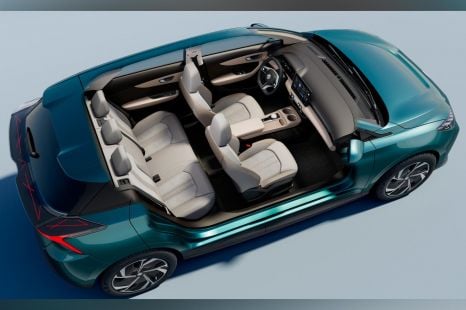

William Stopford
15 Days Ago